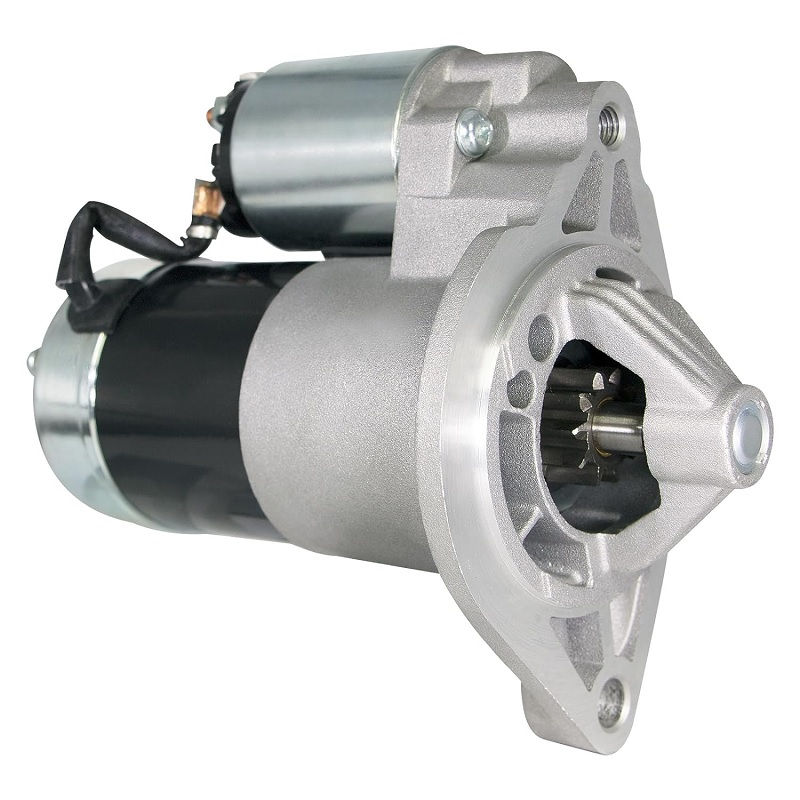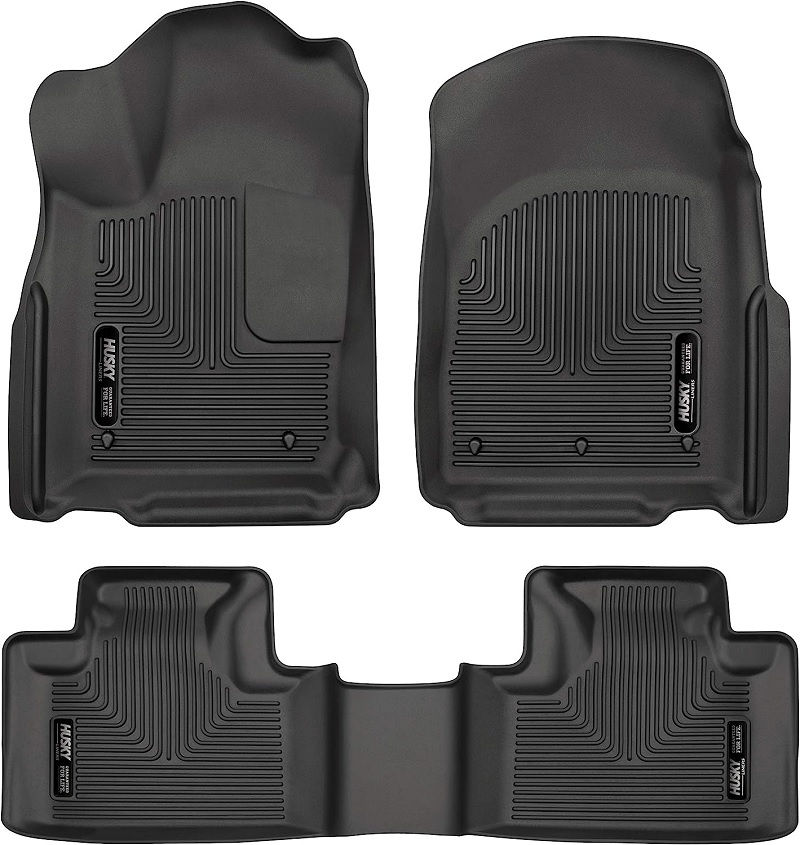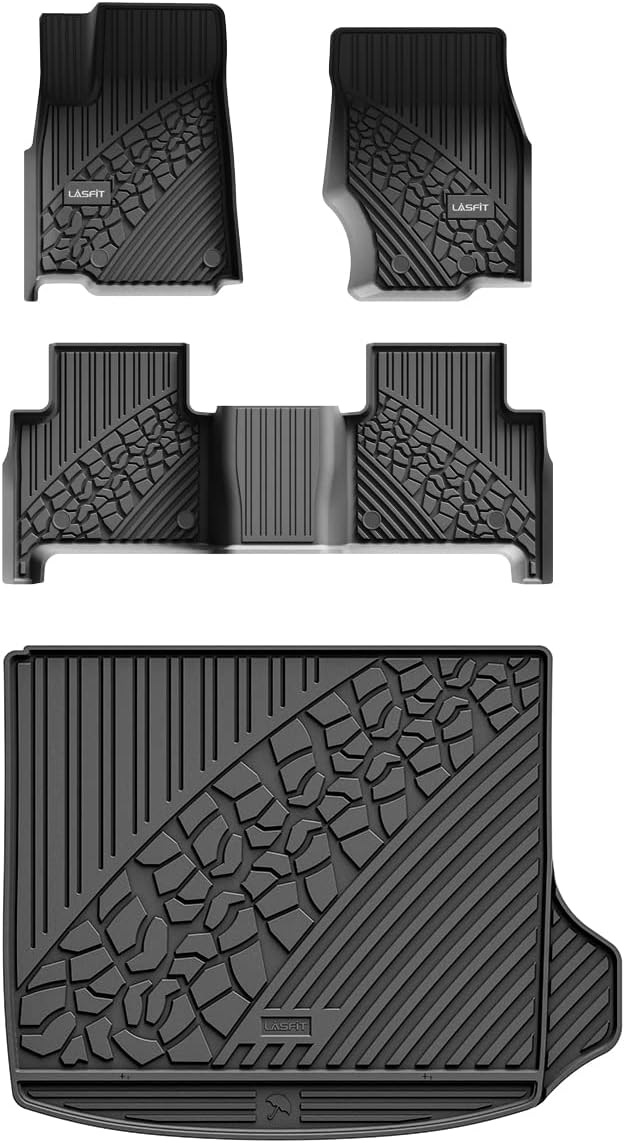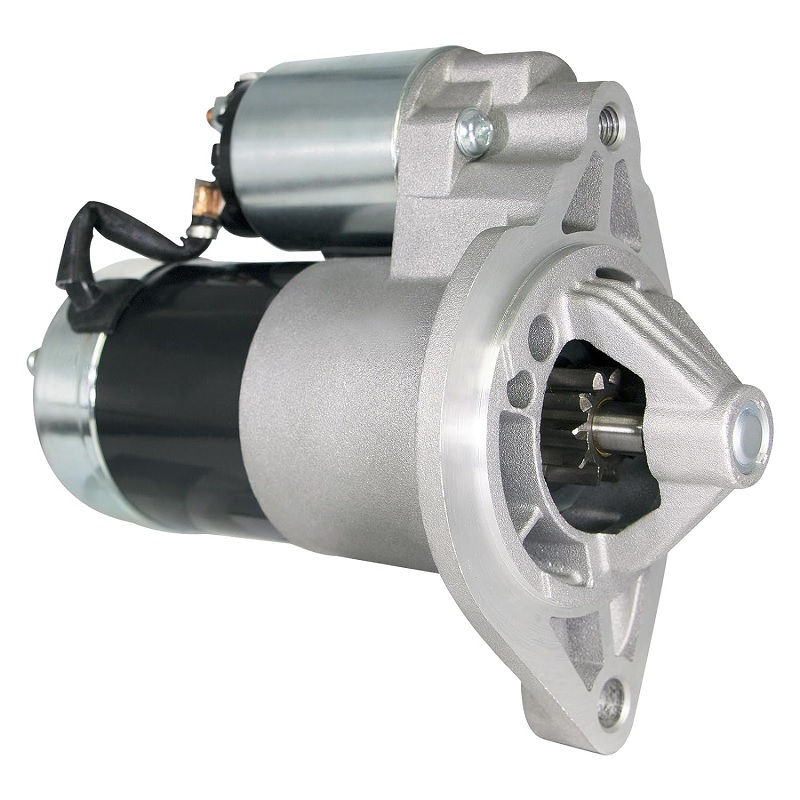This post contains affiliate links. This means I will make a commission at no extra cost to you should you click through and make a purchase [ “As an Amazon Associate, I earn from qualifying purchases.” ]. Read the full disclosure here.
Jeep Grand Cherokee Starter GuideMechanic.Com The Jeep Grand Cherokee is a powerful and reliable SUV that has gained popularity for its off-road capabilities and luxurious features.
One crucial component of this vehicle is the starter, which is responsible for igniting the engine and getting your vehicle running smoothly.
In this comprehensive blog article, we will delve into the details of the Jeep Grand Cherokee starter, exploring its functions, common issues, maintenance tips, and more.
Whether you are a Jeep enthusiast or a new owner, this article will provide you with the knowledge you need to understand and maintain your Jeep Grand Cherokee starter.
Before we dive into the specifics, let’s have a quick overview of what a starter does. The starter is an electrical motor that engages with the flywheel to crank the engine, enabling it to start.
See Also: Jeep Grand Cherokee Catalytic Converter
It is a critical component in the ignition system, and without a properly functioning starter, your Jeep Grand Cherokee won’t be going anywhere. Now, let’s explore the various aspects of the Jeep Grand Cherokee starter in more detail.
How Does a Jeep Grand Cherokee Starter Work?

When you turn the key or push the start button in your Jeep Grand Cherokee, a series of events is set in motion to start the engine.
The starter motor, which is connected to the battery, receives an electrical signal from the ignition switch. This signal activates the starter solenoid, a small device that engages the starter gear with the flywheel.
When the starter gear meshes with the flywheel, it begins to turn the flywheel, which in turn rotates the engine’s crankshaft.
As the crankshaft starts to rotate, the pistons move up and down in their cylinders, drawing in fuel and air and igniting the mixture to start the engine. Once the engine is running, the starter disengages from the flywheel and returns to its resting position.
The starter motor requires a significant amount of electrical current to function properly. Therefore, it is crucial to have a fully charged battery and clean, tight connections to ensure optimal performance. Additionally, the starter motor itself should be in good condition, free from excessive wear or damage.
The Components of a Jeep Grand Cherokee Starter
A Jeep Grand Cherokee starter is composed of several key components that work together to crank the engine. These components include:
- Starter Motor: The starter motor is an electric motor that converts electrical energy into mechanical energy. It consists of a housing, armature, brushes, and a commutator. The armature is a central rotating component that has wire windings and is supported by bearings.
- Starter Solenoid: The starter solenoid is an electromagnetic switch that connects the starter motor to the battery. When the ignition switch is turned on, the solenoid receives an electrical signal and engages the starter gear with the flywheel.
- Starter Gear: The starter gear, also known as the pinion gear, meshes with the teeth on the flywheel to turn it and start the engine. It is attached to the starter motor’s armature shaft and moves forward to engage the flywheel when the starter is activated.
- Flywheel: The flywheel is a large, heavy wheel mounted on the engine’s crankshaft. It has teeth around its circumference that the starter gear engages with to turn the flywheel and start the engine.
- Battery: The battery provides the electrical power necessary to operate the starter motor. It delivers a high current to the starter when the ignition switch is turned on, allowing it to crank the engine.
- Ignition Switch: The ignition switch is the control mechanism that sends an electrical signal to the starter solenoid when the key is turned or the start button is pressed. It completes the circuit between the battery and the starter motor.
Understanding these components and how they work together is essential for diagnosing and troubleshooting starter-related issues in your Jeep Grand Cherokee.
Engaging the Flywheel: The Starter’s Role
When you activate the starter in your Jeep Grand Cherokee, the starter gear extends forward and meshes with the flywheel’s teeth.
This engagement allows the starter to turn the flywheel, which in turn rotates the engine’s crankshaft. The rotation of the crankshaft initiates the combustion process, starting the engine and allowing your vehicle to run.
The starter gear is designed in such a way that it disengages from the flywheel once the engine is running. This prevents the starter motor from spinning at high speeds, which could cause damage to the starter or other engine components. Instead, the starter gear retracts, returning to its resting position, ready for the next start cycle.
See Also: Jeep Liberty Catalytic Converter
It’s worth noting that modern Jeep Grand Cherokees often feature a gear reduction starter. This type of starter uses a gear system to multiply the torque produced by the starter motor, allowing for more efficient and powerful cranking of the engine.
Gear reduction starters are particularly beneficial in larger engines or challenging operating conditions where additional starting power is required.
Signs of a Failing Starter
Check out this Husky Liners — Weatherbeater | Fits 2011 – 2015 Dodge Durango/Jeep Grand Cherokee – Front & 2nd Row Liner – Black, 3 pc. | 99051

Recognizing the signs of a failing starter is crucial for timely maintenance and avoiding potential breakdowns. Ignoring these signs can lead to further damage to your Jeep Grand Cherokee’s starter system and potentially leave you stranded. Here are some common symptoms that may indicate a failing starter:
1. Clicking Noises
When you attempt to start your Jeep Grand Cherokee, you may hear a series of rapid clicking noises instead of the engine turning over.
These clicks are often indicative of a weak or failing starter solenoid. The solenoid may not be receiving enough electrical current to engage the starter gear with the flywheel, resulting in repeated clicking sounds.
Summary: Clicking noises while trying to start your Jeep Grand Cherokee could indicate a weak or failing starter solenoid.
2. Grinding Sounds
If you hear a harsh grinding or screeching noise when starting your Jeep Grand Cherokee, it may indicate a damaged or worn-out starter gear.
When the starter gear is unable to properly engage with the flywheel, it can cause teeth grinding against each other, resulting in an unpleasant noise. Ignoring this issue can lead to further damage to the flywheel and other engine components.
Summary: Grinding or screeching noises during startup may suggest a damaged or worn-out starter gear.
3. Engine Fails to Start
When your Jeep Grand Cherokee’s starter is failing, the engine may not start at all, even when you turn the key or press the start button. This can be frustrating and inconvenient, especially if you rely on your vehicle for daily transportation. If you experience repeated difficulty starting your engine, it is essential to have the starter system inspected and repaired as soon as possible.
Summary: A failing starter can prevent your engine from starting, leaving you stranded.
4. Intermittent Starting Issues
Intermittent starting issues occur when your Jeep Grand Cherokee’s engine starts inconsistently. Sometimes it starts without any problems, while other times it struggles to turn over or fails to start altogether.
This inconsistency can indicate an underlying issue with the starter, such as a faulty solenoid or worn-out brushes. Ignoring intermittent starting issues can lead to complete starter failure over time.
Summary: Intermittent starting problems may point to a faulty starter component, requiring attention to prevent complete failure.
5. Smoke or Burning Smell
If you notice smoke or a burning smell coming from the engine compartment when starting your Jeep Grand Cherokee, it is essential to address the issue immediately.
This can be a sign of an electrical problem within the starter system, such as a short circuit or overheating. Continuing to use your vehicle in this condition can lead to severe damage or even a fire.
Summary: Smoke or a burning smell during startup indicates an electrical issue within the starter system, requiring immediate attention.
6. Dashboard Warning Lights
In some cases, a failing starter can trigger warning lights on your Jeep Grand Cherokee’s dashboard. These lights may include the check engine light, battery indicator, or a specific starter-related warning light. If you notice any warning lights illuminated while starting your vehicle, it is advisable to have the starter system inspected by a professional.
Summary: Dashboard warning lights during startup can indicate a failing starter, requiring professional inspection.
Common Starter Problems and Solutions

While starters are generally reliable components, they can experience problems over time due to wear, electrical issues, or other factors. Here are some common problems that can occur with a Jeep Grand Cherokee starter, along with recommended solutions:
1. Worn-out Starter Motor Brushes
Starter motor brushes are responsible for conducting electrical current from the commutator to the armature windings. Over time, these brushes can wear down, resulting in reduced electrical contact and decreased starter performance.
See Also: Jeep Dashboard Symbols and Meanings
If you suspect worn-out brushes, the solution is to replace them with new ones. This can often be done without replacing the entire starter motor.
How to Replace Starter Motor Brushes
- Disconnect the negative terminal of the battery to ensure safety.
- Locate the starter motor in your Jeep Grand Cherokee. It is typically located near the bottom of the engine, attached to the transmission bell housing.
- Remove any necessary components or covers to access the starter motor.
- Detach the electrical connections from the starter motor, including the main power cable and any smaller control wires.
- Remove the mounting bolts that secure the starter motor to the engine or transmission.
- Gently separate the starter motor from the engine, taking care not to damage any surrounding components.
- Locate the brush holder on the back of the starter motor. It is typically a small plastic or metal component that houses the brushes.
- Remove the screws or clips holding the brush holder in place.
- Take note of the position and orientation of the brushes before removing them.
- Remove the old brushes and replace them with new ones of the same size and design.
- Reassemble the brush holder and secure it back onto the starter motor.
- Reinstall the starter motor into its original position, ensuring proper alignment with the flywheel.
- Tighten the mounting bolts to the specified torque.
- Reconnect the electrical connections to the starter motor, ensuring a secure and proper fit.
- Reinstall any components or covers that were removed to access the starter motor.
- Finally, reconnect the negative terminal of the battery.
Summary: Worn-out starter motor brushes can be replaced to restore proper electrical contact and improve starter performance.
2. Faulty Starter Solenoid
The starter solenoid is responsible for engaging the starter gear with the flywheel when you start your Jeep Grand Cherokee.
If the solenoid is faulty, it may not be able to complete this engagement, resulting in starting issues. In this case, replacing the starter solenoid with a new one is the recommended solution.
How to Replace the Starter Solenoid
- Disconnect the negative terminal of the battery for safety.
- Locate the starter solenoid in your Jeep Grand Cherokee. It is typically mounted on or near the starter motor.
- Disconnect the electrical connections from the solenoid, including the main power cable and any control wires.
- Remove any mounting bolts or screws that secure the solenoid to the starter motor or engine.
- Gently separate the faulty solenoid from the starter motor or engine, taking care not to damage any surrounding components.
- Install the new solenoid in the same position, ensuring proper alignment and fit.
- Tighten the mounting bolts or screws to the specified torque.
- Reconnect the electrical connections to the new solenoid, ensuring a secure and proper fit.
- Finally, reconnect the negative terminal of the battery.
Summary: A faulty starter solenoid can be replaced with a new one to restore proper engagement between the starter gear and the flywheel.
3. Damaged Starter Gear or Flywheel Teeth
If your Jeep Grand Cherokee’s starter gear or flywheel teeth are damaged or worn, it can lead to grinding noises and difficulty starting the engine. In this case, repairing or replacing the damaged components is necessary to restore proper functionality.
Repairing Damaged Starter Gear or Flywheel Teeth
If the damage is minimal, it may be possible to repair the starter gear or flywheel teeth without replacing the entire component. This typically involves smoothing out any rough edges or burrs using a file or grinding tool.
However, it is crucial to ensure that the repaired teeth provide proper engagement to avoid future issues. It is recommended to consult a professional mechanic or technician for this type of repair.
Replacing Damaged Starter Gear or Flywheel
If the damage is severe or the teeth are excessively worn, replacing the starter gear or flywheel is the recommended solution. This is a more involved process and may require specialized tools and equipment.
It is advisable to have this replacement performed by a qualified mechanic or technician to ensure proper installation and alignment.
Summary: Damaged or worn-out starter gear or flywheel teeth should be repaired or replaced to eliminate grinding noises and ensure proper engagement.
Maintaining Your Jeep Grand Cherokee Starter
Maintaining your Jeep Grand Cherokee starter is essential for its longevity and optimal performance. By implementing regular maintenance practices, you can prevent potential issues and extend the lifespan of your starter. Here are some key maintenance tips:
1. Regularly Inspect the Starter System
Performing regular visual inspections of your Jeep Grand Cherokee’s starter system can help identify any signs of wear, damage, or loose connections.
See Also: Jeep Compass Warning Lights
Check for any corrosion on the battery terminals, loose or frayed electrical connections, and signs of oil or fluid leaks that may affect the starter’s operation. If you notice any issues during the inspection, address them promptly.
2. Clean and Tighten Connections
Over time, the electrical connections to the starter motor and solenoid may become loose or corroded, affecting the flow of electrical current.
Regularly clean the connections and ensure they are tightened to the manufacturer’s specifications. This will help maintain proper electrical contact and prevent starting issues due to poor connections.
3. Lubricate Moving Parts
Applying a small amount of lubricant to the moving parts of the starter, such as the starter gear and the armature shaft, can help reduce friction and wear.
However, it is essential to use a lubricant recommended by the manufacturer to avoid any negative effects on the starter’s performance.
4. Protect the Starter from Water and Debris
Jeep Grand Cherokees are known for their off-road capabilities, which means they may encounter water, mud, and debris. To protect your starter from these elements, ensure that it is properly shielded and sealed. Consider installing additional splash guards or protective covers to prevent water and debris from reaching the starter and causing damage.
5. Check Battery Health
A healthy battery is essential for the proper functioning of your Jeep Grand Cherokee’s starter system. Regularly check the battery’s health and charge level to ensure it can deliver the necessary electrical current to the starter.
If the battery shows signs of deterioration or struggles to hold a charge, consider replacing it to maintain optimal starter performance.
6. Follow Recommended Maintenance Schedule
Refer to your Jeep Grand Cherokee’s owner’s manual for the recommended maintenance schedule. Adhering to this schedule will help ensure that all components, including the starter, receive the necessary attention and maintenance. Regular servicing by a qualified technician can help identify any potential issues before they become major problems.
Summary: Regularly inspecting, cleaning, and maintaining your Jeep Grand Cherokee starter system can help prevent issues and extend its lifespan.
Conclusion
The starter is a vital component of your Jeep Grand Cherokee’s ignition system, responsible for initiating the engine’s operation.
Understanding its functions, potential issues, maintenance requirements, and available upgrades is essential for keeping your Jeep Grand Cherokee running smoothly.
Regular inspections, timely repairs, and adherence to the recommended maintenance schedule will help ensure the longevity and optimal performance of your starter.
Whether you choose to perform maintenance tasks yourself or seek professional assistance, taking care of your Jeep Grand Cherokee starter will contribute to a reliable and enjoyable driving experience.
See Also: Jeep Grand Cherokee Alternator
- Seafoam Catalytic Converter Cleaner: It Work & How to Use It? - April 18, 2025
- Rislone Catalytic Converter Cleaner: What It Is, How It Works - April 18, 2025
- Wynn’s Catalytic Converter Cleaner 325ml - April 17, 2025

